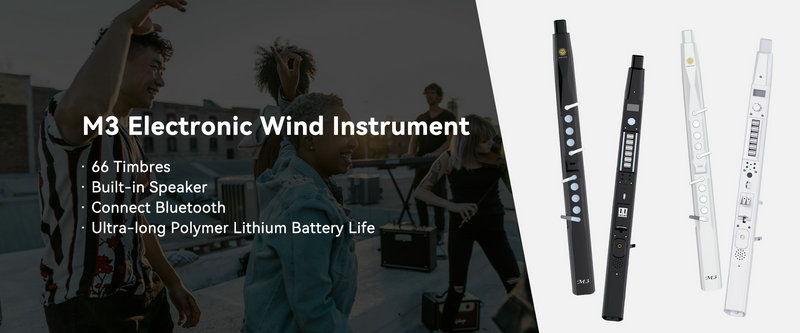Electronic wind instruments (EWIs) are a relatively recent development in the world of music. They emerged as a fusion of traditional wind instrument playing techniques and modern electronic technology.
The concept of using electronics to create wind instrument-like sounds can be traced back to the mid-20th century. In the 1960s and 1970s, with the advancements in electronic music technology, musicians and inventors began to explore ways to combine the expressiveness of wind instruments with the flexibility and versatility of electronics. This led to the creation of early prototypes and experimental instruments.
One of the key figures in the development of EWIs is Nyle Steiner. He is credited with inventing the Electronic Wind Instrument (EWI) in the 1970s. Steiner's design aimed to provide musicians with an instrument that could mimic the sounds and playing characteristics of traditional wind instruments, while also offering additional features and capabilities made possible by electronics.
Another important milestone in the history of EWIs was the popularity and influence of saxophonist Michael Brecker. Brecker was an early adopter and advocate of the EWI, and his use of the instrument in his music helped to bring it to the attention of a wider audience. In 1985, Brecker first recorded on the EWI while playing with the jazz fusion group Steps Ahead, further popularizing the instrument within the jazz community and beyond.
Since then, EWIs have continued to evolve and improve. Today, there are various models and brands of EWIs available on the market, each with its own unique features and capabilities. They are used in a wide range of musical genres, including jazz, rock, pop, and electronic music. EWIs offer musicians the ability to create a vast array of sounds, from traditional wind instrument tones to synthesized and processed sounds, and they often come with additional controls and functions for shaping and manipulating the sound.
In addition to the EWI, there are other types of electronic wind instruments that have emerged over the years, such as the Lyricon and the Sylphyo. The Lyricon was one of the first commercially available electronic wind instruments and was popular in the 1970s and 1980s. It had a unique sound and playing style. The Sylphyo is a more recent electronic wind instrument that builds on the legacy of earlier models and offers advanced features and expressiveness.
Overall, the origin of electronic wind instruments lies in the creative efforts of musicians and inventors who sought to combine the best of traditional wind instruments with the possibilities offered by modern electronics. Through continuous innovation and development, EWIs have become an important and exciting part of the musical landscape, allowing musicians to explore new sonic territories and express their creativity in unique ways.
SUNRISE MELODY M3 Electronic Wind Instrument - The best-selling Electronic Wind Instrument
. 66 Timbres
. Built-in Speaker
. Connect Bluetooth
. Ultra-long Polymer Lithium Battery Life



